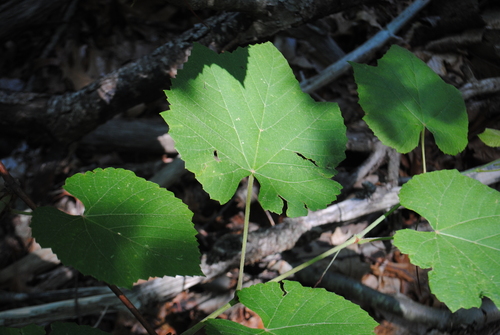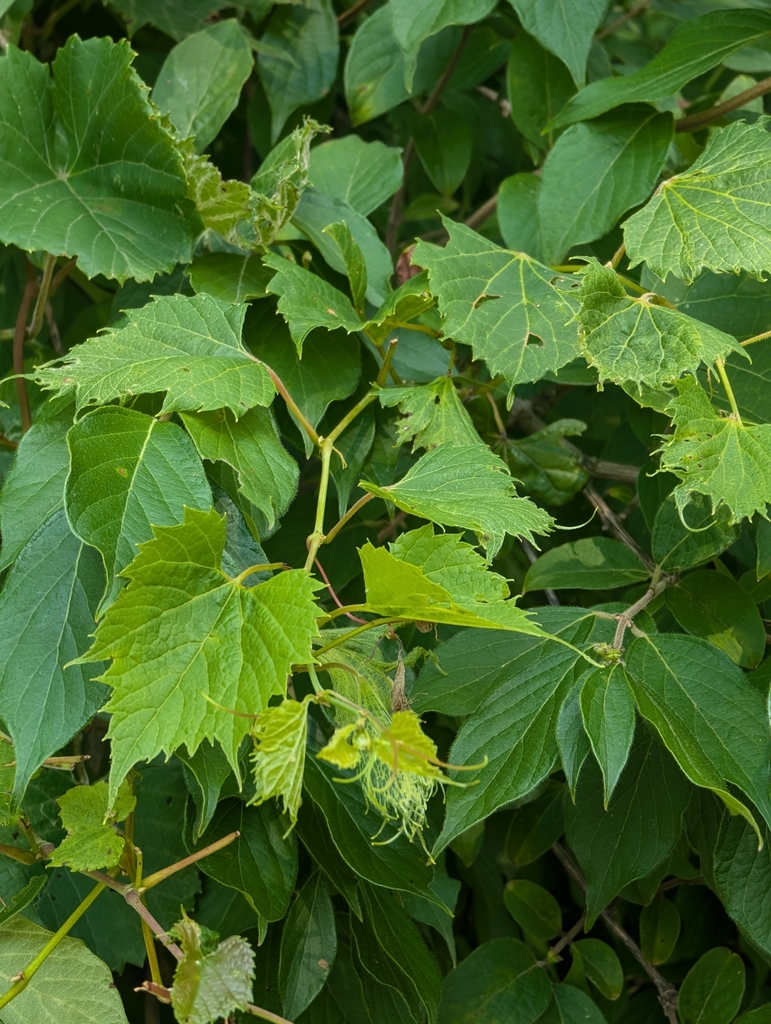|
| Common Animals Fish Mushrooms Flora |
Vitis riparia |
June: Leaves mature, and fruit development continues.
Riparia grape is widely used in winemaking as rootstock for cultivated varieties. Used in folk medicine to promote health and prevent diseases. Harvesting of berries and shoots traditionally takes place in late summer and early autumn.
Wild grape species native to North America. Highly resistant to diseases and adverse conditions. Berries are small, dark blue with intense aroma.
Harvesting berries in late summer to early autumn when fully ripe. Using young shoots for medicinal decoctions.
Harvest berries carefully to avoid damaging the vine. Best to collect shoots before flowering for maximum benefits.
Berries can be used fresh, dried, or frozen. Shoots are dried in the shade to preserve medicinal properties.
Riparia grape jam (Boiling)
Preserves the aroma and benefits of wild berries
Preserves the aroma and benefits of wild berries
1. Wash 1 kg berries, remove stems.
2. Cover berries with 700 g sugar and leave for 5-6 hours to release juice.
3. Boil on low heat for 20 minutes, stirring.
4. Pour into sterilized jars and seal.
2. Cover berries with 700 g sugar and leave for 5-6 hours to release juice.
3. Boil on low heat for 20 minutes, stirring.
4. Pour into sterilized jars and seal.
Decoction of young grape shoots (Boiling and infusion)
Boosts immunity and metabolism
Boosts immunity and metabolism
1. Chop 2 tbsp young shoots.
2. Pour 500 ml boiling water and boil for 10 minutes.
3. Infuse for 30 minutes, strain.
4. Take 100 ml twice daily.
2. Pour 500 ml boiling water and boil for 10 minutes.
3. Infuse for 30 minutes, strain.
4. Take 100 ml twice daily.
Fresh riparia grape berries (Harvesting and eating)
Rich in vitamins and antioxidants
Rich in vitamins and antioxidants
1. Carefully pick ripe berries.
2. Rinse before use.
3. Eat fresh or add to salads and desserts.
2. Rinse before use.
3. Eat fresh or add to salads and desserts.
Pickled grape leaves (Pickling)
Traditional use for dolma preparation
Traditional use for dolma preparation
1. Wash leaves, blanch for 2 minutes in boiling water.
2. Cool and pickle in brine of water, vinegar, and salt for 24 hours.
3. Use for dolma preparation.
2. Cool and pickle in brine of water, vinegar, and salt for 24 hours.
3. Use for dolma preparation.
 United States · Ohio · Pickaway
United States · Ohio · Pickaway






